
Fob watch (c. 1890) made by Gorham for Tiffany.
Concluding a week of tentacular posts. I was tempted to do something about tentacle porn but that subject has already been covered here, and besides, there’s rather a lot of it around these days. Given the writhing nature of octopus limbs you’d expect there to be far more octopoid Art Nouveau design than there is. The Art Nouveau style was exceptional in allowing the octopus to become a design motif, probably the first time in Western Europe the animal had been given its decorative due since the Ancient Greeks, Minoans and other Mediterranean civilisations used it to pattern dishes and vases. The remoteness of the animal is no doubt one reason it was shunned for so long in northern countries: British sailors used to refer to octopuses as “devil-fishes”, a term that appears in William Hope Hodgson’s fiction. Octopuses in Europe weren’t part of the general culture the way they are in Japan. It took the appearance of Ernst Haeckel’s Kunst-Formen der Natur, published from 1899 to 1904, to bring the aesthetic attractions of the stranger varieties of marine life to a wide audience.
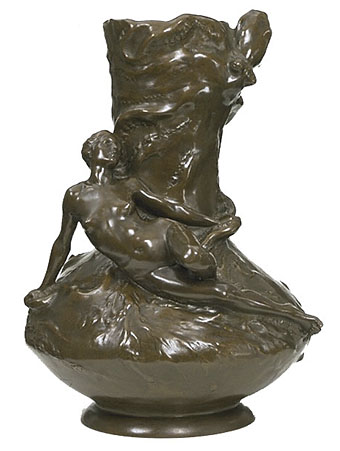
The Prey (1895), bronze by Auguste Ledru.

From Animal Vignettes (c. 1900)
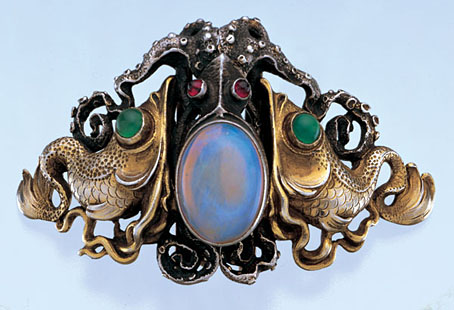
Buckle in silver, gilt, opal, garnet, chalcedony (c. 1900) by Karl Rothmüller.
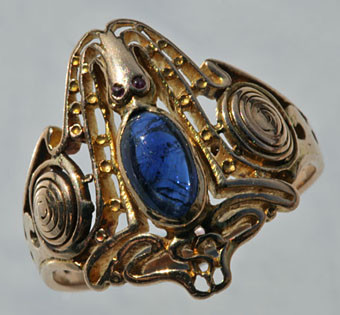
Ring by Karl Rothmüller.
Jewellery designs by Béla-Gyula Krieger (c. 1900).
Béla-Gyula Krieger was a Hungarian artist working as an animalier for Parisian jewellery designers. This page of splendid octopus and squid designs is from Dover Publications’ Art Nouveau Fantasy Animal Jewelry Designs (1997). Information about Krieger remains scarce, the book only gives his birth date, 1861, and says little else about him.
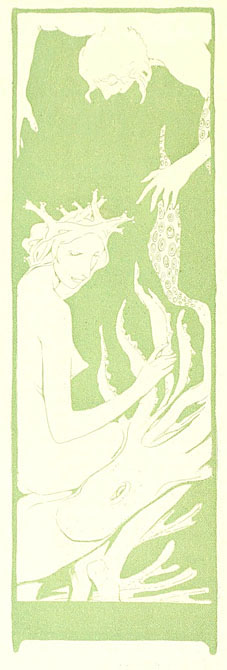
Fritz Erler (1900).
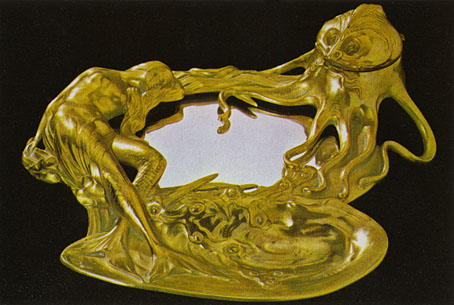
Mermaid and octopus inkwell from Vienna (c. 1910)
Two versions of the same inkwell, with a mirror for the water above, and blue glass below. The second version also appears to have had its octopus-head lid replaced.
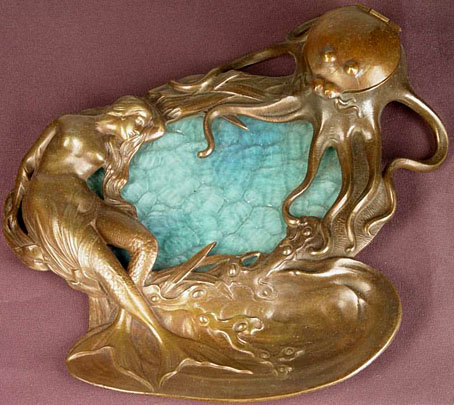
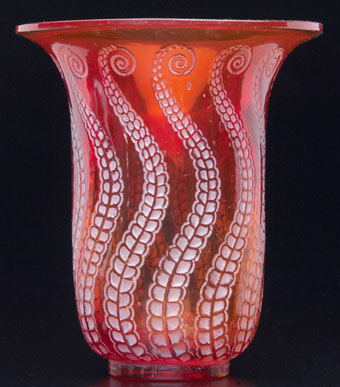
Lalique vase (1921).
Too late for an Art Nouveau design but a great use of tentacles by René Lalique. The shape of the vase takes the motif back to the Mediterranean.
Previously on { feuilleton }
• Tentacles #4: Cthulhu in Poland
• Tentacles #3: Dwellers in the Mirage
• Tentacles #2: The Lost Continent
• Tentacles #1: The Boats of the ‘Glen Carrig’
• Jewelled butterflies and cephalopods

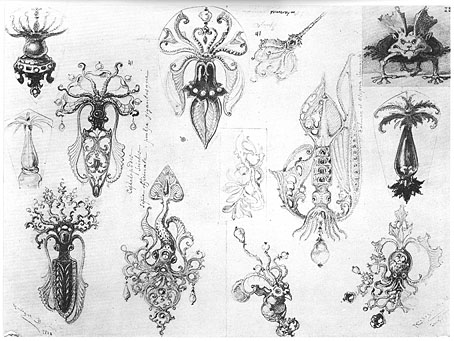
Sorry if this is already known to you, but reading your post reminded me of Victor Hugo’s drawing of an octopus for his “Travailleurs de la Mer”, as seen here: http://cabinetmagazine.org/issues/4/weiss.php.
It is dated 1866.
Regards.
Hi Simon. Thanks, I’m familiar with Hugo’s drawings but that’s definitely one I’ve not seen before. Interesting drawing and an interesting essay too. Hugo’s description of the octopus as something uniquely horrible shows why it was kept out of the decorative world for so long.
Disney Tentacles…http://www.trailersfromhell.com/trailers/751
Still one of the best. And it is the best Nautilus. Wouldn’t mind seeing that film again, James Mason was a better Nemo than Herbert Lom even though I loved Mysterious Island.
So many of the posters use the squid attack as a theme it would have made a suitable post this week:
http://wharferj.files.wordpress.com/2011/09/20-000-leagues-under-the-sea-original.jpg